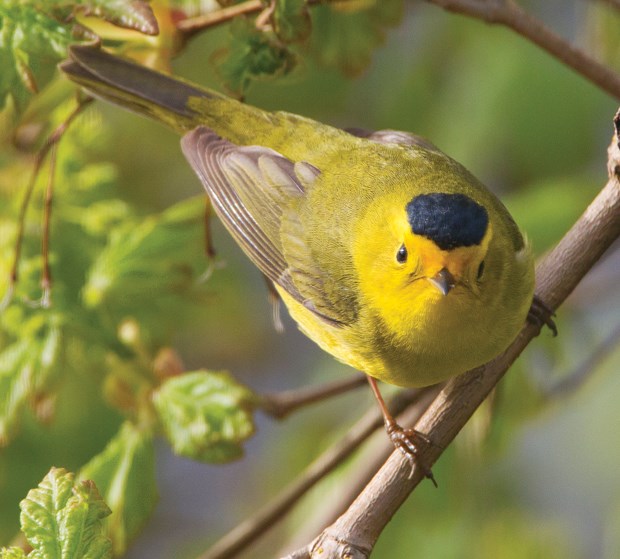May on the North Shore is indeed a merry month for those who love nature's colour and song.
Every day brings new and wonderful discoveries from wildflowers, to birds not seen or heard since last year. And nowhere on the North Shore is this more evident than at The Conservation Area at Maplewood Flats.
Rufous hummingbirds are back from their Mexican wintering grounds in good numbers. It is said that they time their arrival when salmonberry and red-flowering currant are blooming. Both plants are nectar sources for them. Black twinberry, a honeysuckle family shrub, is another fine local hummingbird plant. In fact, one spring, the sanctuary was buzzing with excitement when a beautiful Calliope hummingbird was spotted feeding at twinberry flowers. Three hummingbird species are on Maplewood's list - Anna's, Rufous, and Calliope (rare).
It is noteworthy that the Cypress Provincial Park Checklist (2010) has the Ruby-throated hummingbirds on its list as accidental (listing only one or two records). I mention it because it's something to watch for, after all, birds can fly!
Many birds arriving or passing through the North Shore are classified as Neotropical migrants, including warblers, vireos, flycatchers, the Western tanager, and black-headed grosbeak. The challenge is to remember their voices from last year. In mid-April there were good numbers of yellow-rumped warblers at the conservation area. Some "butter-buts" have yellow throats (Audubon's) and some white throats (Myrtle). For a long time they were classified as separate species, then they were lumped. The yellow-rumps have a lovely song characterized as a simple warble and a call that sounds like "whit or flit." Other bird songs can be classified as trills, or warbles. For example, our local purple finch's song is a rich warble, while the spotted towhee trills. One thing is certain, our warblers don't warble! Warblers (properly wood warblers) to watch for in May are orangecrowned, black-throated gray, Townsend's, yellow, MacGillivray's, Wilson's and the common yellowthroat. Wilson's warbler will be arriving on the North Shore in good numbers soon and are commonly seen in local gardens. The bright yellow male is unmistakable with its black cap. Wood warblers have been called the butterflies of the bird world as they're so colourful and amazingly beautiful.
Other migrants to watch and listen for include the warbling vireo, Hammond's flycatcher, Pacific-slope flycatcher, western tanager and black-headed grosbeak.
Local (resident) species add their beautiful voices to spring's symphony, including the spotted towhee, dark-eyed junco, black-capped chickadee, house finch, and purple finch. For example, two chickadee species occur on the North Shore, chestnut backed and black-capped. The sweet "tea-time" notes is the song of the latter, the former lacks the "tea-time" (or is it "cheeseburger" song).
The best time of the day to really appreciate the richness of bird song is at sun-up when you can be thrilled by the dawn chorus. I love to hear the lovely "cheerily, cheerily, cheer-up" song of the robin in the early morning. Robins always sing in May and all the birds with them.
On Saturday, May 24 there will be a dawn chorus event at The Conservation Area at Maplewood Flats at the double gates just before the main entrance to the parking lot at 6 a.m. Along with birds, spring also brings many other wonderful discoveries. Recently butterflies, including the beautiful Mourning Cloak were spotted sunning themselves on the pathways.
I should also mention that there was great excitement in April when a mountain bluebird was sighted at the conservation area and the ospreys are back! How wonderful it is to be out on a fine spring morning at the conservation area to watch the swallows and martins swooping over the marsh, hear the music of birds, see eagles, vultures and hawks soaring overhead, and to enjoy the company of all those who love nature - all kindred spirits.
To help with bird songs, calls and identification, get a good field guide, or app. Check with your local wild bird shop for the best advice. See you on the trail.
Al Grass is a naturalist with Wild Bird Trust of British Columbia, which offers free walks at The Conservation Area at Maplewood Flats on the second Saturday of every month. The next walk will be Saturday, May 10 starting at 10 a.m. where participants will search and listen for the early birds that call the area their summer home Meet at WBT's site office, 2645 Dollarton Hwy. Walks go rain or shine.



